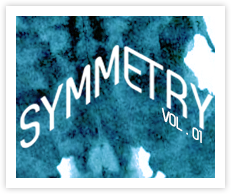

Promoting Tradition
Melissa Noonan // September 29, 2011

Many of us unthinkingly carry a piece of Nova Scotia’s history in our pockets on a daily basis. Yes, I’m talking about that smallest member of the Canadian currency family: the dime. On this tiny piece of underappreciated steel is a representation of the famous Nova Scotian fishing and racing schooner – the Bluenose. On most occasions, we disregard this jingling tribute to history in our wallets. How, then, is this iconic sea vessel marketing itself in the modern day so it isn’t forgotten?
First, a bit of history: the Bluenose was designed by William J. Roué and built by Smith and Rhuland on March 26, 1921 in Lunenburg, NS. Ninety years ago on October 22, Bluenose won the esteemed International Fishermen’s Trophy and held onto the champion title for the next 18 years.
A replicate of the schooner was built in 1963, Bluenose II, to promote Nova Scotia heritage and tourism. However, in 2009, the Bluenose II ran into a stern problem (pun intended): the vessel is now being reconstructed due to hull hogging. This means that there is an excess of buoyancy in the middle of the ship causing the middle to rise up and the bow and stern to bend down.
In order to continue promoting Nova Scotia’s history and heritage while the schooner is reconstructed, the Bluenose II had to adapt modern publicity practices to build relationships with today’s tech savvy population. Some of their tactics include the Bluenose II website and a Track the Bluenose II feature to see where the schooner is currently located. A live webcam is also placed inside the construction site; it is refreshed every 5 seconds, so audiences can see every step of the construction process. These interactive approaches create stronger ties with publics, allowing them to feel they are more involved in the process of the reconstruction.
This interactive approach is representative of James E. Grunig’s two-way symmetrical communication model. Website visitors feel as if they are part of the process and can leave comments. The Bluenose II Ship Yard Crew actually reply to comments and questions left on the webcam site.
It’s interesting to see how tradition is kept alive using modern forms of communication. For example, communication firms such as MT&L have used Web 2.0 to breathe life back into Nova Scotia’s shipbuilding tradition with the Canadian Ships Start Here campaign (the Bluenose legacy is mentioned in the history section of the Ships Start Here website).
Nova Scotia depends upon its traditions and its unique history to advance tourism and trade in our province. By incorporating two-way communication with these interactive tactics, we have a better chance of keeping tradition alive. This makes it possible to share our history and heritage, not only with tourists, but also with future generations.
